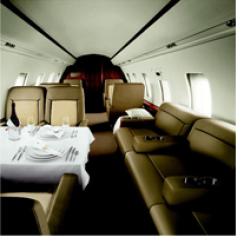One heathy change brought about by the financial crisis is a cutback in executive perks. Take corporate jets, for example. Once these plush planes were routinely being used for non-business travel and even provided to retired executives. But incidents such as Citigroup’s attempt last January to buy a luxury jet at the same time that the bank was receiving a taxpayer bailout served as a reminder to make company jets plana non grata for beleaguered bank executives.

The banks should reinstate these hard-won changes permanently, even if they’ve repaid their TARP loans. With little standing with the public, the banks would do well to stay away from unwanted attention. The new financial regulatory bill, which is expected to limit banks’ earning power, also calls for greater fiscal discipline.
A look at the current status of major banks’ fleets suggests, moreover, that they could do more to bring down these high-flying expense items. Although Citigroup last year announced that it would sell three of its five planes, it has not yet sold a single one, said a bank official who wanted to remain anonymous. BofA Merrill, which has nine planes, has said it would sell three jets and one helicopter. J.P. Morgan Chase owns four planes outright and partially owns two others. Morgan Stanley owns a pair of jets. As for Goldman Sachs, it leases.
None of the banks will say whether they intend to further downsize their fleet, above promised sale targets already announced by Citi and BofA Merrill. Howard Dicker, a partner at New York law firm Weil, Gotshal & Manges, points out that for a large bank, a $30-million-dollar airplane is a comparatively modest asset, and one that does not entail much disclosure. (Banks don’t have to disclose how many planes they own, how they use them or if they sell them.)
What’s more, now is not an opportune time to dispose of a jet. Bob Knebel, vice president of sales at Flexjet, the leasing division of Canadian plane manufacturer Bombardier, says the resale price of a five-year old jet is currently less than 50 percent of its purchase price, versus 80 percent in a better economy. Thus, delaying the sale of a jet could actually mean fewer losses on the banks’ books. And unlike, say, old mortgage-backed securities, airplanes are designed to soar more than once.
Still, corporate jets are a conspicuous symbol of corporate excess — Warren Buffett once called his plane The Indefensible — and these banks might want to try to stay under the radar and sell the planes, even if it means losses.






